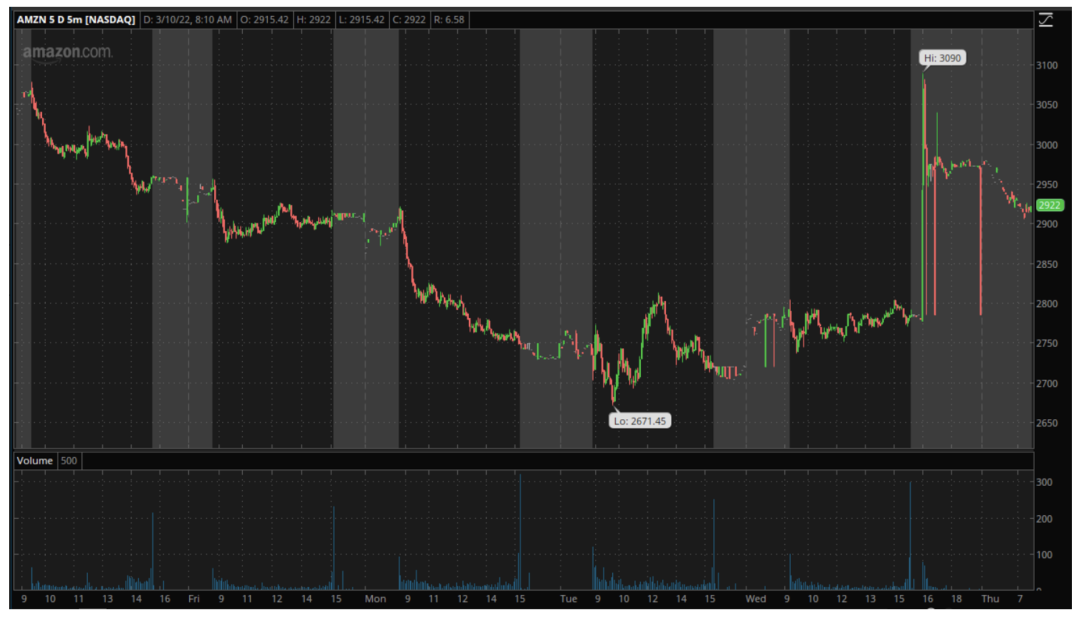There has been a bit of a trend among mega-cap tech stocks, with $Apple(AAPL)$, $Tesla Motors(TSLA)$ , and $Alphabet(GOOG)$ having issued stock splits. Now $Amazon.com(AMZN)$ will be joining the club, announcing a 20-for-1 split that will take effect on June 6.
All of this raises a few questions for investors: Is AMZN's bounce entirely in response to this news, and will it continue as the immediate impact fades? And finally, what does it mean, long-term, for AMZN?

First and foremost, anyone buying $10 billion worth of any stock will give it a pretty consistent bid. It may not actually force the price up, but it will, at the very least, slow any downward move. More significant than that is what this says about the possible intentions of Amazon going forward. It is not their first buyback. They initiated programs in 2012 and 2016 too, but this is the largest and, given the near one hundred-billion-dollar cash position of the company, the most significant.
Since it began as an online bookstore in the early days of the internet, Amazon has always been focused on growth. They were, for many years, the poster child for a company that eschewed profits for an extended period and reinvested all their earnings, and often more than they earn, on expanding their reach and infrastructure. A few years ago, they started to reap the benefits of that. They turned the profit tap on around 2015 and have been quite consistently reporting increasing profits ever since. The announcement of a buyback of this size suggests that maybe they are moving towards the next stage in a company’s development, the direct return of capital to shareholders.
Excitement about that possibility will have prompted some of the buying, but the split itself will also have an effect. It raises the possibility of AMZN being included in the price-weighted Dow, which would mean a spurt of buying from index funds. Some are saying that it will make the stock more accessible to small investors as well, but I wouldn’t focus on that too much in a world where so many apps and brokers offer investments in partial or fractional shares.
That brings us to the second question as to how long the bump can be expected to last. The answer can be assumed based on the short-term chart above: not very long. As you can see, the market has already begun to claw back gains even before the opening. No doubt that is because today is a generally down day in what is an extremely volatile market, but the recent splits by Apple, Tesla, and Google all suggest that it is a microcosm of the expected moves over the next couple of months. In all those cases, the stocks got a bit of a boost after the split, but then the impact tailed off.
Chances are, the same will apply to Amazon largely because of what it means for the stock over time. The long-term impact of the split as far as the value of the shares go will be precisely zero. Investors will receive twenty shares for each one they currently hold, but each share will be one twentieth of the price of the old ones. The total value of an investor’s holding won’t change at all.
Still, AMZN at around $140 will look more attractive to some people than AMZN at $2800. That and the $10 billion buyback will lend support to the stock, but that isn’t the main reason to buy AMZN. That reason is because, even through difficult times, the company has posted great growth and profitability, and yet the stock is more than 25% off its high a few months ago. That makes it value at these levels, regardless of any split.
SOURCE: Nasdaq
Comments